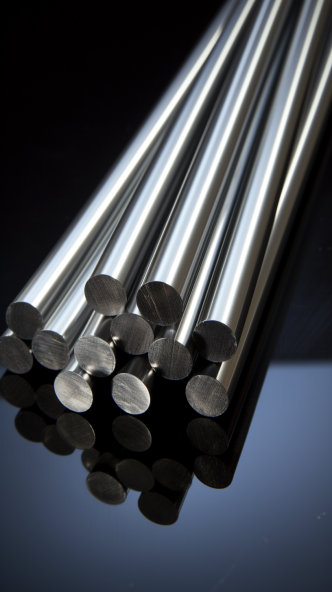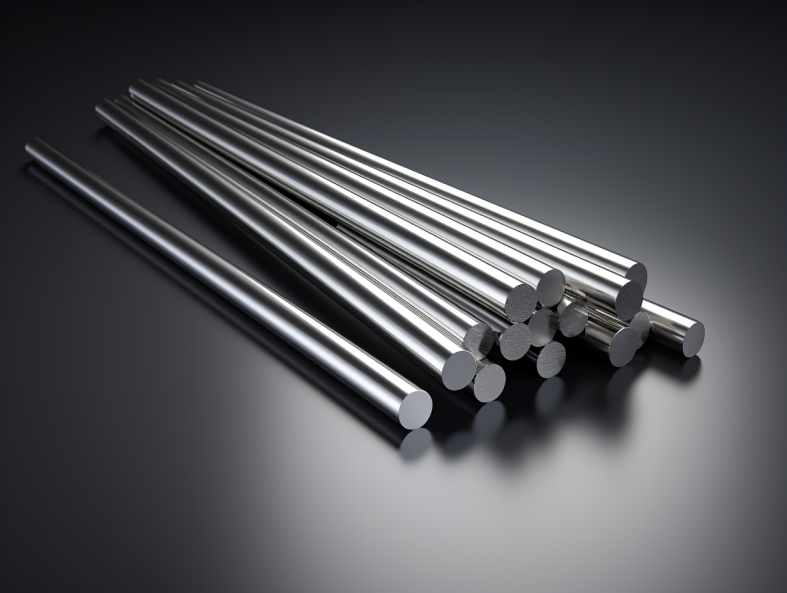Lorsqu'il s'agit d'outils de coupe à haute performance, les tiges de carbure sont un élément essentiel de l'industrie. Mais vous êtes-vous déjà demandé comment ces matériaux, petits mais puissants, prennent vie ? Dans cet article, nous allons nous plonger dans la fascinante histoire du carbure de tungstène. procédé de fabrication de barres de carbure. De la préparation des matières premières à l'inspection de la qualité, nous décomposerons chaque étape sur un ton conversationnel, facile à suivre et riche d'enseignements. Alors, c'est parti !
Préparation des matières premières pour le processus de fabrication du fil machine en carbure
Les tiges en carbure sont les super-héros des outils d'usinage : elles sont solides, durables et capables de fonctionner dans des conditions extrêmes. Mais même les super-héros ont besoin d'une base solide. Ce voyage commence par la préparation minutieuse des matières premières.
Les principaux ingrédients sont carbure de tungstène (WC) et un liant métallique, généralement du cobalt. Le carbure de tungstène est apprécié pour sa dureté et sa résistance à l'usure, tandis que le cobalt lie les particules entre elles. Tous deux sont méticuleusement sélectionnés pour répondre à des exigences de qualité strictes, car, comme on le dit, il n'y a pas de déchet sans déchet.
- Mélange des ingrédients:
Les poudres de carbure de tungstène et de cobalt sont mélangées pour obtenir un mélange homogène. Cette étape implique souvent un broyage à billes, un processus au cours duquel les poudres sont mélangées à des billes dures dans un tambour rotatif afin d'assurer l'uniformité du mélange. Imaginez le pétrissage de la pâte à pain, mais à l'échelle industrielle. - Contrôle de la taille des particules:
La taille des particules de carbure de tungstène est cruciale. Les grains plus petits donnent des matériaux plus durs, tandis que les grains plus gros améliorent la ténacité. Équilibrer ces propriétés, c'est comme accorder finement une guitare : la précision est essentielle. - Distribution des classeurs:
Le cobalt doit recouvrir uniformément les particules de carbure de tungstène pour assurer une liaison optimale. Des additifs et des procédés spécialisés garantissent que cette étape critique est parfaite.

Le pré-frittage dans le Processus de fabrication des barres de carbure
Le pré-frittage est comme la cuisson d'un gâteau à mi-chemin : il prépare la "pâte" pour le processus de frittage final. Voici une description détaillée :
| Paramètres | Description |
|---|---|
| Objectif | Élimine l'excès d'humidité et lie partiellement les particules. |
| Plage de température | 400°C à 800°C, en fonction de la composition du matériau. |
| La durée | Généralement 1 à 2 heures, ce qui garantit une densification suffisante du matériau. |
| Atmosphère | Réalisé dans un environnement contrôlé, souvent à l'aide d'un gaz inerte comme l'argon pour éviter l'oxydation. |
Le pré-frittage renforce l'intégrité structurelle du matériau, ce qui le rend plus facile à manipuler au cours des processus ultérieurs. Imaginez que vous construisiez un château de sable : vous voulez que le sable adhère mais qu'il ne durcisse pas encore complètement.
Pressage ou extrusion dans le processus de fabrication des barres de carbure
Une fois les matériaux prêts, il s'agit de les façonner en tiges. Cette étape implique soit pressant ou extrusion.
- Appuyer sur:
La matière en poudre est placée dans une filière et comprimée sous haute pression. Cette méthode est excellente pour obtenir une densité constante sur l'ensemble de la tige. - Extrusion:
Le mélange de poudres est d'abord transformé en boue, puis forcé à travers une filière pour créer de longues tiges continues. Ce processus s'apparente à l'extraction de dentifrice d'un tube : il est doux, efficace et idéal pour les grandes séries.
Facteurs clés de la formation :
| Facteur | Appuyer sur | Extrusion |
|---|---|---|
| Forme de la sortie | Limité à des conceptions plus simples. | Capable de concevoir des modèles complexes et variables. |
| Usure des outils | Minime en raison du pressage à sec. | Plus élevé en raison de l'abrasivité de la boue. |
| Volume de production | Convient aux petits et moyens volumes. | Préféré pour la production à grande échelle. |
Frittage de barres de carbure
Le frittage est l'étape finale où toute la magie opère. Le matériau est chauffé à des températures proches de la fusion, ce qui permet au carbure de tungstène et au cobalt de fusionner en une structure dense et solide.
| Paramètres | Détails |
|---|---|
| Plage de température | 1 300°C à 1 600°C |
| Atmosphère | Souvent réalisée sous vide ou avec de l'hydrogène pour éviter toute contamination. |
| La durée | Elle peut durer de quelques heures à une journée entière, en fonction de la taille et de la composition de la canne à pêche. |
| Résultats | Permet d'obtenir une densité, une dureté et une résistance à l'usure maximales. |
Ce processus est comparable à la forge d'une épée : il nécessite une chaleur extrême, un contrôle précis et une synchronisation experte.






Poursuite du traitement après la Processus de fabrication des barres de carbure
Après le frittage, les barres de carbure sont loin d'être prêtes pour une utilisation finale. Un traitement continu permet de s'assurer qu'elles répondent à des spécifications précises.
| Étape | Objectif |
|---|---|
| Broyage | Affine les dimensions et les finitions de surface, en veillant à ce que les tiges respectent des tolérances strictes. |
| Polissage | Améliore la qualité de la surface et réduit les frottements lors de l'utilisation. |
| Revêtement | Souvent, les tiges sont recouvertes de matériaux tels que le nitrure de titane pour améliorer les performances. |
| Découpage | Les tiges peuvent être coupées en longueurs plus courtes pour répondre à des applications spécifiques. |
Chacune de ces étapes est essentielle. Il s'agit de transformer un diamant brut en une pierre précieuse étincelante.
Inspection de la qualité du processus de fabrication des barres de carbure
Le contrôle de la qualité est l'épine dorsale de tout processus de fabrication, et les tiges de carbure ne font pas exception à la règle. Chaque tige est soumise à des tests rigoureux avant d'être considérée comme prête à être commercialisée.
- Précision dimensionnelle:
Des outils tels que les micromètres et les machines à mesurer tridimensionnelles (MMT) permettent de s'assurer que les tiges répondent exactement aux spécifications de taille. Un écart aussi minime qu'un cheveu peut rendre une tige inutilisable. - Essai de dureté:
Des appareils tels que les testeurs de dureté Rockwell ou Vickers mesurent la résistance de la tige à la déformation. - Détection des défauts:
Des méthodes de contrôle non destructives, telles que l'analyse par ultrasons ou par rayons X, sont utilisées pour identifier les défauts internes sans endommager la tige. - Tests de performance:
Les échantillons de tiges sont soumis à des conditions réelles afin de vérifier leur durabilité et leur fonctionnalité.

FAQ
| Question | Réponse |
|---|---|
| À quoi servent les barres en carbure ? | Ils sont utilisés pour fabriquer des outils de coupe, des forets, des fraises et des pièces résistantes à l'usure. |
| Comment la poudre de carbure de tungstène est-elle fabriquée ? | Il est produit en combinant du tungstène métallique avec du carbone à des températures élevées dans une atmosphère contrôlée. |
| Qu'est-ce qui rend les tiges de carbure si durables ? | Leur combinaison unique de carbure de tungstène et de cobalt crée un matériau à la fois dur et résistant. |
| Les barres de carbure peuvent-elles être recyclées ? | Oui, ils peuvent être récupérés et retraités, ce qui réduit les déchets et l'impact sur l'environnement. |
| Quelle est la différence entre l'extrusion et le pressage ? | L'extrusion convient mieux aux formes complexes et aux grands volumes, tandis que le pressage est idéal pour les conceptions plus simples. |
Conclusion
Les procédé de fabrication de barres de carbure est une symphonie de science, d'ingénierie et d'artisanat. Des matières premières soigneusement préparées aux contrôles de qualité rigoureux, chaque étape contribue à la création d'un produit qui n'est rien moins qu'extraordinaire. Que vous soyez machiniste, ingénieur ou simple curieux, la compréhension de ce processus permet de comprendre pourquoi les tiges de carbure sont les héros méconnus du monde de la fabrication. Ainsi, la prochaine fois que vous verrez un outil de coupe en action, vous saurez le chemin incroyable qu'il a parcouru pour y parvenir.




